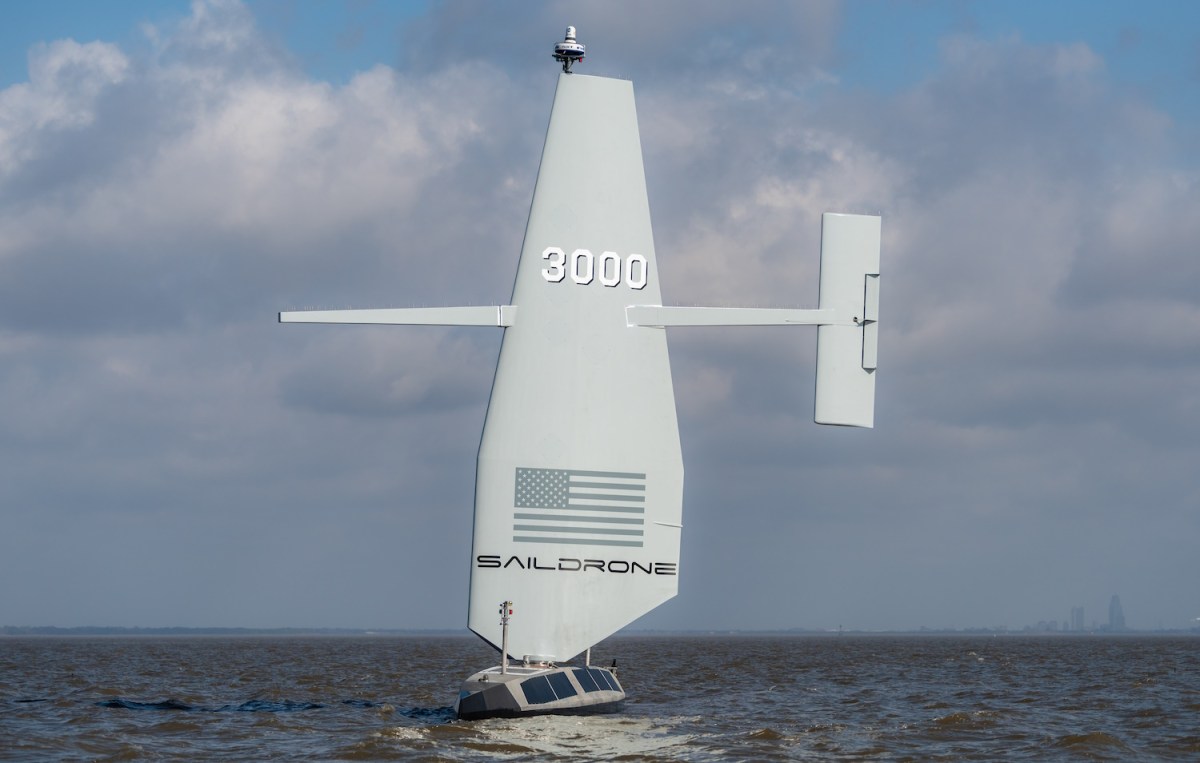

In a significant step forward for oceanographic research and military applications, Saildrone, a leading ocean intelligence company, has launched the first of its new generation Surveyor autonomous vessels, marking a departure from previous models with its aluminum construction. This development comes as the demand for sophisticated ocean observation tools continues to surge, with the U.S. Navy showing particular interest in these unmanned surface vehicles (USVs). However, it has been made clear that these vessels will not be armed.
Richard Jenkins, the Founder and CEO of Saildrone, shared insights with TechCrunch on the growing needs of ocean observation, emphasizing the role of aerial, surface, and subsurface technologies in enhancing the quality and complexity of ocean data collection. The newly launched 20-meter SD-3000 Surveyor represents a significant evolution from its predecessors, featuring an aluminum hull for increased durability and efficiency in ocean environments. This choice of material stems from the pragmatic benefits of aluminum, including robustness, longevity, cost-effectiveness, and the potential for rapid mass production in large-scale facilities like Austal.
The decision to opt for aluminum over fiberglass/carbon composites, which were used in earlier versions, was influenced by the larger scale of aluminum production capabilities in the U.S., as compared to composite materials. The sail of the SD-3000, albeit made from composite materials, highlights the innovative approach Saildrone is taking towards constructing these autonomous vessels.
Saildrone’s initiative comes at a time when the appetite for advanced ocean monitoring tools has never been higher. Recent endeavors by startups like Syrenna and nonprofit organizations such as Cerulean have demonstrated the value of semi-stationary and satellite-based ocean observations. Saildrone’s USVs stand out by offering high-resolution data collection capabilities, both above and below the sea surface, capturing a level of detail that far surpasses that of satellite data. The onboard sonar of these drones can reach depths of up to 11,000 meters, providing comprehensive and persistently captured measurements over vast oceanic terrains.
The application of improved marine intelligence spans various fields, including climate science, international logistics, law enforcement, and military operations. The U.S. Navy, in particular, has expressed its intention to utilize these new aluminum Surveyors, with Admiral Lisa Franchetti commenting on the strategic advantage presented by uncrewed vehicles. These vessels allow crewed ships to be deployed where they are most needed, performing critical tasks rather than routine observations that can now be automated.
Despite the strategic military interest, the prospect of arming these Surveyor vessels has not been a topic of discussion. Given their primary design for data collection and surveillance (as implied by their name), weaponizing these platforms would be impractical. They are first and foremost tools for gathering information, not engaging in combat operations.
Saildrone’s production line, operated by Austal, is projected to deliver a new Surveyor every six weeks initially. The SD-3000, along with its forthcoming aluminum counterparts, will undergo testing by the Navy to evaluate their capabilities in providing surface and undersea intelligence. These tests will cover a range of applications critical to national security, including anti-submarine warfare, underscoring the multifaceted value these autonomous vessels bring to the table in both scientific and military arenas.
Source






